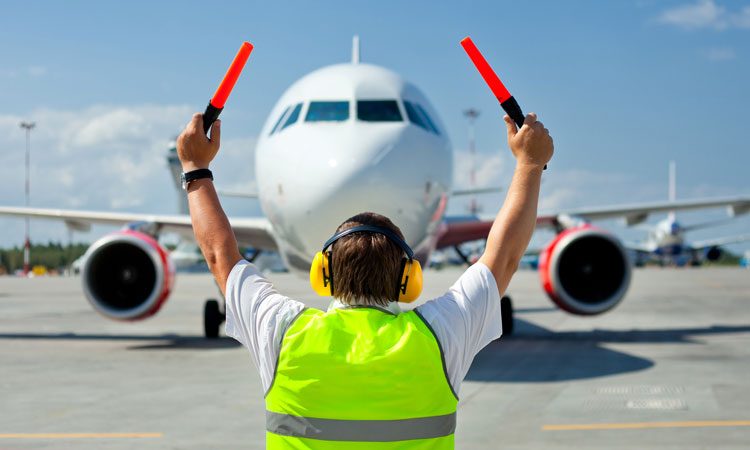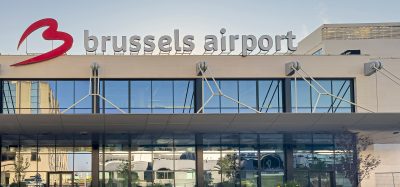Ensuring safety within ground operations during the age of automation
- Like
- Digg
- Del
- Tumblr
- VKontakte
- Buffer
- Love This
- Odnoklassniki
- Meneame
- Blogger
- Amazon
- Yahoo Mail
- Gmail
- AOL
- Newsvine
- HackerNews
- Evernote
- MySpace
- Mail.ru
- Viadeo
- Line
- Comments
- Yummly
- SMS
- Viber
- Telegram
- Subscribe
- Skype
- Facebook Messenger
- Kakao
- LiveJournal
- Yammer
- Edgar
- Fintel
- Mix
- Instapaper
- Copy Link
Posted: 10 September 2019 | Wayne Anaka | CEO AVCON.WW | No comments yet
Safety is supposed to be everyone’s top priority in the world of airports, airlines and ground service providers. However, as Wayne Anaka, President of AVCON, highlights, in reality safety is having to compete with on-time performance and profitability.


AIRPORTS, airlines and ground service providers all have a safety management system (SMS) in place, as well as a health and safety programme, and most are very good. But then why is there no appreciable reduction in ground damage accidents involving aircraft over the last 10 years. The same trend is apparent in vehicle-to-vehicle accidents as well but here the data is not easily obtainable nor is it very comprehensive. We have seen improvement, but on a per 100 aircraft basis the accident figure has been consistent.
The annual estimated cost of such damage, as articulated by IATA, is pegged at $12 billion. Ground handlers peg the direct cost at closer to $4 billion. Either way that is an astronomical sum occurring year after year.
We know what to do but somehow the system is not working. It is not that the accountants ignore the cost. It is not because senior management does not put a focus on costs. It is not that front-line management and workers do not care. So, what is going wrong?
There are a number of contributing factors:
1. Staff shortages leading to overwork, fatigue and accidents
2. Training deficiencies because of the high turn over instructors cannot keep up
3. It is easy to get away with breaking the safety rules: Accidents are the result of cumulative flaunting of the rules that eventually lead to a serious mishap
4. Supervisors are under pressure from senior management and so ignore an unsafe act to achieve on-time performance
5. The necessary focus on the financial bottom leads airlines to cut costs wherever they can and their service providers in turn cut costs through low wages; excerpting pressure on workers.
However, the lack of investment in instilling a culture of safety discipline should itself be a cost driver. Investing in living wage, effective training and safety discipline throughout the company will not only reduce accident costs but lead to improved productivity and on-time performance.
The problem is we have been focusing on the wrong thing and need to examine the root cause of all chaos. This includes poor communication; lack of respect; lack of discipline; and no safety-rule enforcement where SMS procedures are woven throughout standard operating procedures and it takes more time and aggravation to ignore them than to follow them.
In other words, change the corporate and airport community culture where safety and productivity go hand-in-hand with optimum staffing levels, well-paid, well-trained, exceptionally hard-working employees at all levels.
This transformation is not going to be easy and it is going to be expensive. It is however an investment not a cost and the cost of the investment has a pool of $4 to $12 billion to work with. Failing to take this type of action will ensure the status quo and I do not believe this is sustainable long term.
What will the future look like if we take the right action today combined with the rapidly emerging AI and robotics technology?
Everything we should be doing today should focus on what it will bring tomorrow. How can we drive vastly improved environmental sustainability cost effectively? How do we eliminate staff shortages and create the high-tech savvy worker that will be needed to run our ramp of tomorrow?
Electric equipment will replace our current fuel-driven equipment, starting at large airports which will be fully transformed around the year 2035, and then the small- and medium-sized airports will follow by 2050. This means airport planning and infrastructure needs to anticipate the requirements and funding that must be secured.
It won’t stop with electric; autonomous, self-driving equipment will become the norm within the same timeframes. Robots will transport bags and cargo to and from warehouses, homes, offices and hotels straight to the aircraft.
Humans will still be required for safety control, operations and maintenance planning, and financial engineering to optimise the AI needed to deliver the most effective schedule. To ensure the supply of skilled humans we will need to invest in retraining current workers to provide the direction and planning necessary to make the most effective use of AI resources.
Safety management will be as critical as ever in the future and we need to be prepared. Self-driving machines can be inherently productive but pose a number of risks if not programmed correctly. What are the new rules of apron and maneuvering areas going to look like? How can technology be programmed to always prioritise safety? The SMS at airports will need to go through many transitional phases. We will be continuously transitioning over the next 30 years as we introduce the cultural advances needed to drive revenue growth, improve safety and productivity, and marry these with the AI advances we see happening. Rest assured these disruptors will also create additional wonders and challenges we have not even contemplated yet.
During the transition when you have both autonomous- and human-driven vehicles operating in the same environment the focus on safety will become harder and far more complex. Human resources will become more challenging as we retrain and/or phase out many current employees. This process must be handled with dignity and care for all involved. Intercompany and agency cooperation will be needed as never before.
Our work is cut out for us but the brain power, enthusiasm and hard work that has always been the driving force behind this industry is fully capable of ensuring a bright, profitable and most importantly, safe, future.
Biography
WAYNE ANAKA, CEO and President, AVCON, was the principal Founding Partner of NavStar Aviation Group, an aviation ground handling company based at three airports in Canada and three in Florida. Prior to founding NavStar, Anaka spent 39 years in various management positions focusing on ground handling, winter operations, environmental storm water management, aircraft deicing and airline operations and customer service. Anaka is a Certified Member of the International Association Airport Executives (IAAE) Canada, and a Past Member of the Georgian College Aviation Advisory Committee, serving two three-year terms.


















